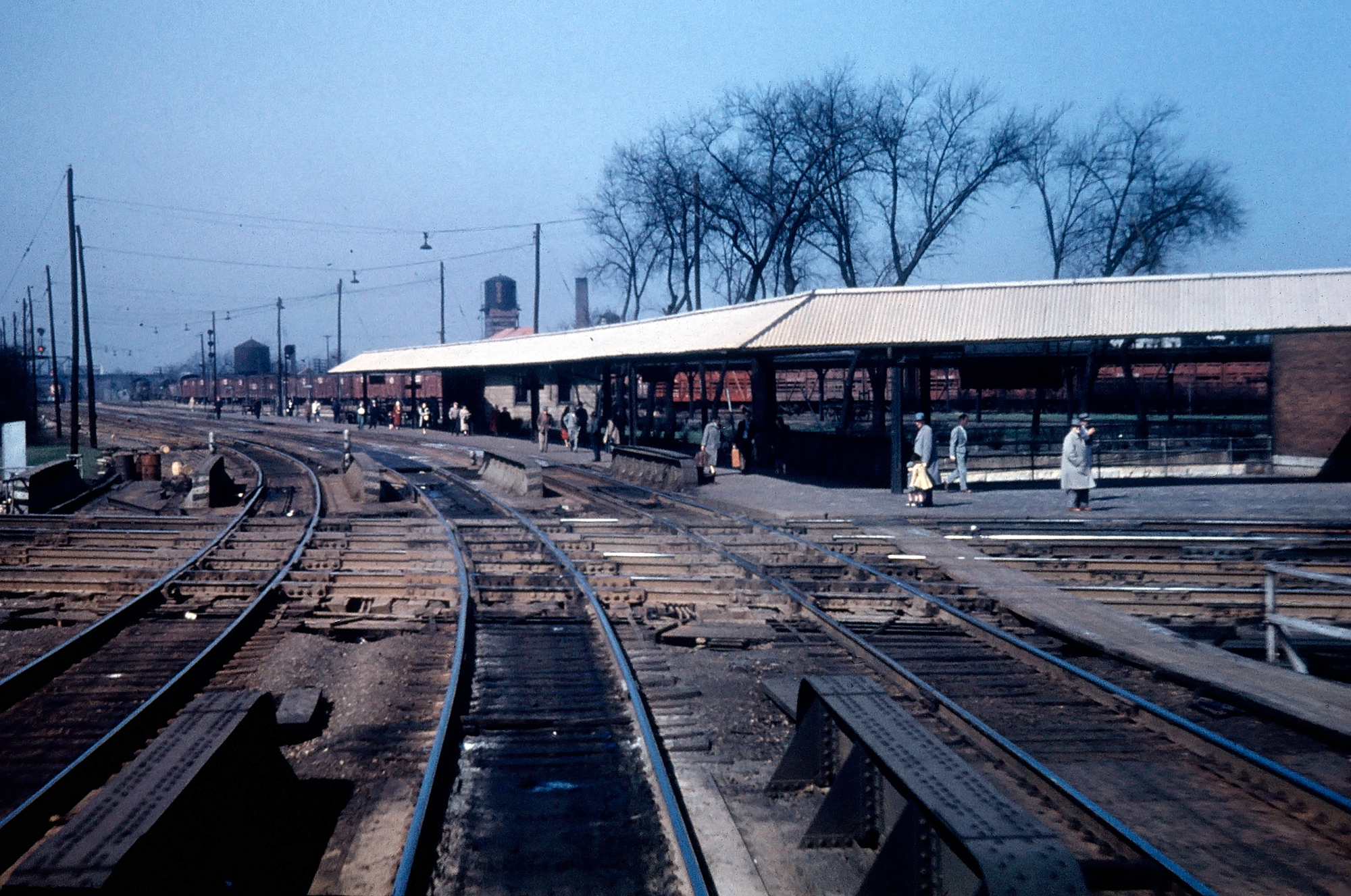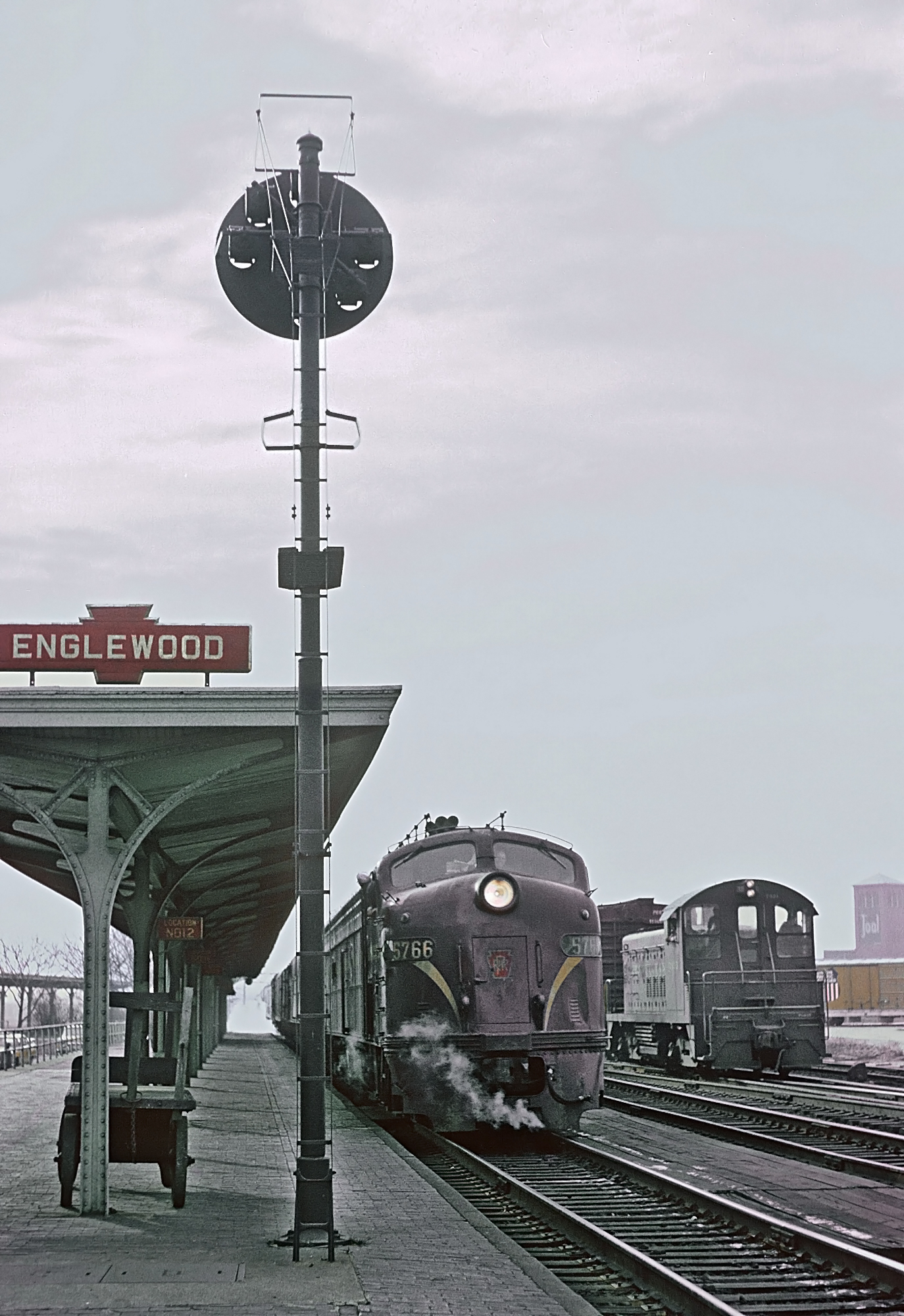Englewood Union Station (Chicago): Photos, History, Legacy
Published: February 8, 2025
By: Adam Burns
Englewood Union Station, once a bustling transit hub located in the Englewood neighborhood of Chicago at 63rd and State Streets is emblematic of the city's rich railroad history and its transformative role in American transportation.
Established in the late 19th century, the station served as a critical intersection for multiple major railroads before declining into obscurity.
During its peak, the station was a vibrant hub serviced by four major railroads: the Rock Island, New York Central, Pennsylvania, and the Nickel Plate Road (which utilized NYC trackage rights). It was additionally served by the Chicago & Eastern Illinois from 1904 until 1913.
The station ultimately ceased operations in 1978 when the Rock Island finally terminated its intercity services and stopped making intermediate stops between LaSalle Street and Gresham.
The rise and fall of Englewood Union Station mirror the dynamic shifts in urban development, transportation preferences, and socio-economic factors that shaped many similar facilities across the United States. Currently, there are no initiatives underway to reactivate the station.
 A 1950s view of Englewood Union Station in Chicago. Looking ahead is the Rock Island main line while the Pennsylvania can be seen crossing from left to right. Despite its small size this was a very busy facility for both commuter and long distance trains. It was also used by the Nickel Plate Road and New York Central. A.C. Kalmbach photo. American-Rails.com collection.
A 1950s view of Englewood Union Station in Chicago. Looking ahead is the Rock Island main line while the Pennsylvania can be seen crossing from left to right. Despite its small size this was a very busy facility for both commuter and long distance trains. It was also used by the Nickel Plate Road and New York Central. A.C. Kalmbach photo. American-Rails.com collection.Origins and Architectural Significance
The modern Englewood Union Station open in 1898, during a period when railroads were the primary mode of transportation.
It was situated near the corner of 63rd and State Streets, commenced operations in 1898. The station was strategically located at the confluence of several major rail lines. The New York Central (NYC) and Rock Island jointly shared tracks from Englewood heading north toward LaSalle Street Station.
At Englewood, the lines diverged, with the Rock Island continuing southwest and the New York Central heading east into Indiana. The PRR crossed the Rock Island line at this junction and proceeded northward into Chicago Union Station. Furthermore, for several miles into Indiana, the PRR’s tracks ran parallel to those of the NYC.
Role in Chicago's Rail Network
Englewood Union Station played a significant role within Chicago's comprehensive and congested railway network, connecting the city to various regional and national destinations.
As rail travel was the backbone of long-distance transportation during the late 19th and early 20th centuries, the station's location positioned it as a significant transfer point, facilitating the movement of thousands of passengers daily.
The station served several prominent trains, most notably New York Central's 20th Century Limited and the Pennsylvania's Broadway Limited, a symbol of luxury rail travel in America.
These pretigious streamliners epitomized the golden age of rail travel, and Englewood was a key stop on its route from Chicago to New York City. Departing their respective Chicago terminals, both trains made a passenger stop at Englewood before initiating a head-to-head race for several miles prior to parting ways.
At its zenith, the station provided access to 52 of the 100 largest U.S. cities. The westbound Rockets of the Rock Island also paused at Englewood, facilitating passenger transfers among the intersecting rail networks. Rock Island’s intercity services continued at the station as late as 1978.
In addition, the Nickel Plate's premier Nickel Plate Limited serving Chicago and Buffalo also made a stop at Englewood on its way to LaSalle Street Station. However, it wasn't just long-distance trains serving station, it was also a prominent and busy commuter station, especially in regards to the Rock Island.
 Pennsy E8A #5766 is ahead of the westbound "Manhatten Limited"/"Golden Triangle" at Englewood Union Station on April 21, 1965. Roger Puta photo.
Pennsy E8A #5766 is ahead of the westbound "Manhatten Limited"/"Golden Triangle" at Englewood Union Station on April 21, 1965. Roger Puta photo.Socio-Economic Impact
Englewood Union Station was not merely a transit point; it was a catalyst for economic development in the Englewood neighborhood.
Furthermore, the station highlighted the role railroads played in urban development by improving accessibility and fostering population growth in the surrounding areas.
As Chicago's railway network expanded, areas near major transit hubs like Englewood experienced substantial population influx and infrastructural development, reflecting broader urban trends seen across America tied to rail-based connectivity.
Decline and Closure
The post-World War II era marked a expedited decline rail travel. The proliferation of automobiles and the construction of interstate highways reduced the dependency on railroads significantly. Additionally, the rise of air travel offered faster alternatives for long-distance travel, contributing to the obsolescence of many railway stations, including Englewood.
The social and economic decline of the Englewood neighborhood in the mid-20th century also played a role in the station's fate. As industries moved out and crime rates rose, the area experienced depopulation and disinvestment, further reducing passenger traffic at the station.
Owing to the decline in intercity passenger rail service and the merger of PRR and NYC into Penn Central, which subsequently went bankrupt and reorganized into Conrail, much of the rail infrastructure was removed. Consequently, the commuter trains on the Metra Rock Island District discontinued service to Englewood, which ultimately closed in the late 1970s. The facility subsequently faced neglect and was eventually demolished.
Legacy
While Englewood Union Station no longer exists, its legacy persists in the context of historical study and nostalgia for rail travel. It serves as a reminder of a time when railroads were fundamentally intertwined with the urban and economic landscapes of cities like Chicago.
Today, discussions of urban redevelopment and transportation often consider the lessons of history embodied by stations like Englewood. The current revival of interest in sustainable and efficient public transit, particularly commuter and intercity rail systems, spotlights these historical stations as case studies in urban planning.
Recent Articles
-
Oregon Railroad Museums: A Complete Guide
Apr 25, 25 03:11 PM
With its rich tapestry of scenic landscapes and profound historical significance, Oregon possesses several railroad museums that offer insights into the state’s transportation heritage. -
North Carolina Railroad Museums: A Complete Guide
Apr 25, 25 02:56 PM
Today, several museums in North Caorlina preserve its illustrious past, offering visitors a glimpse into the world of railroads with artifacts, model trains, and historic locomotives. -
New Jersey Railroad Museums: A Complete Guide
Apr 25, 25 11:48 AM
New Jersey offers a fascinating glimpse into its railroad legacy through its well-preserved museums found throughout the state.

